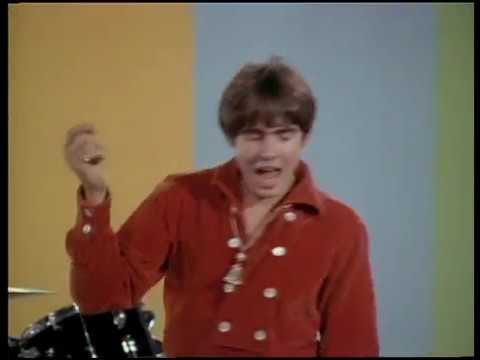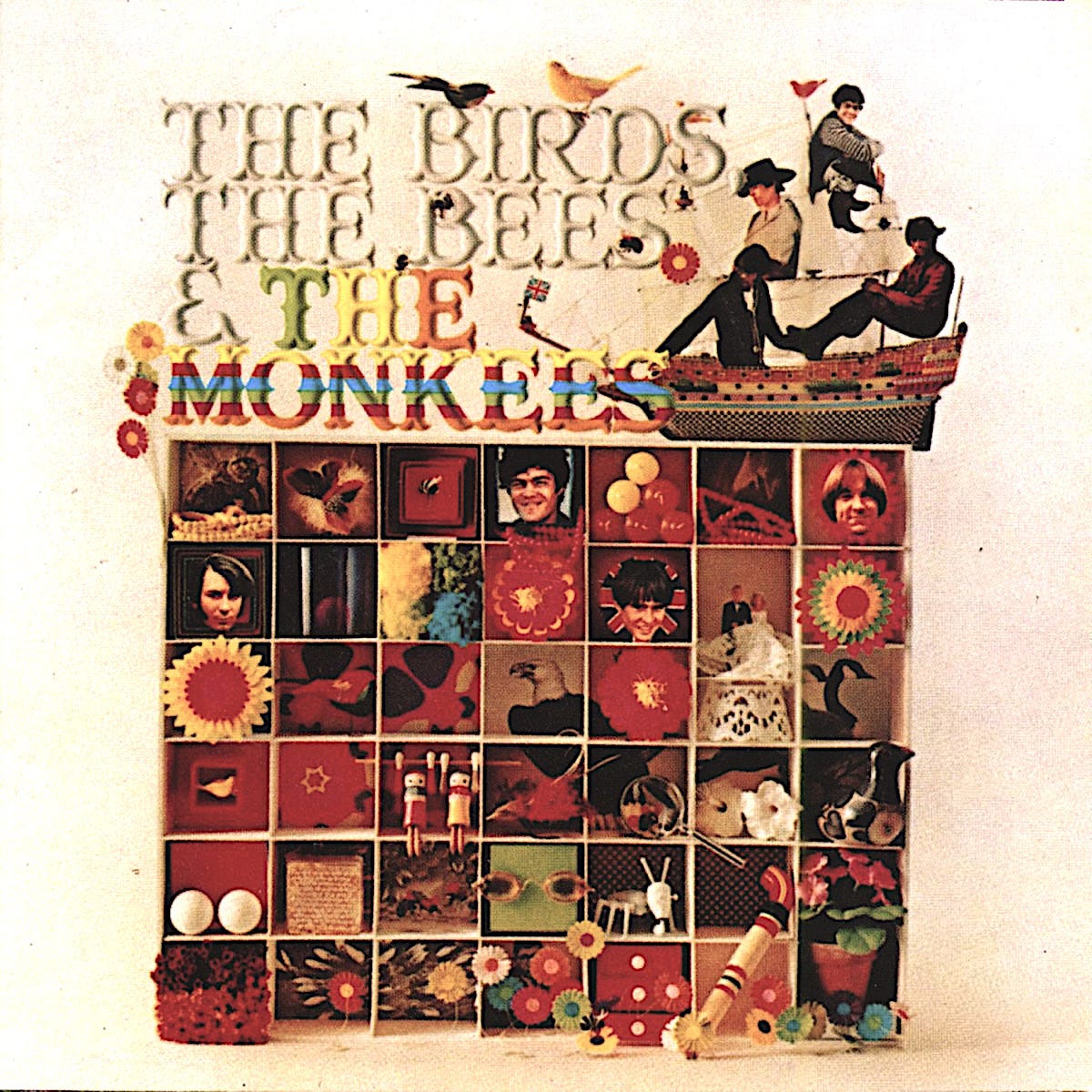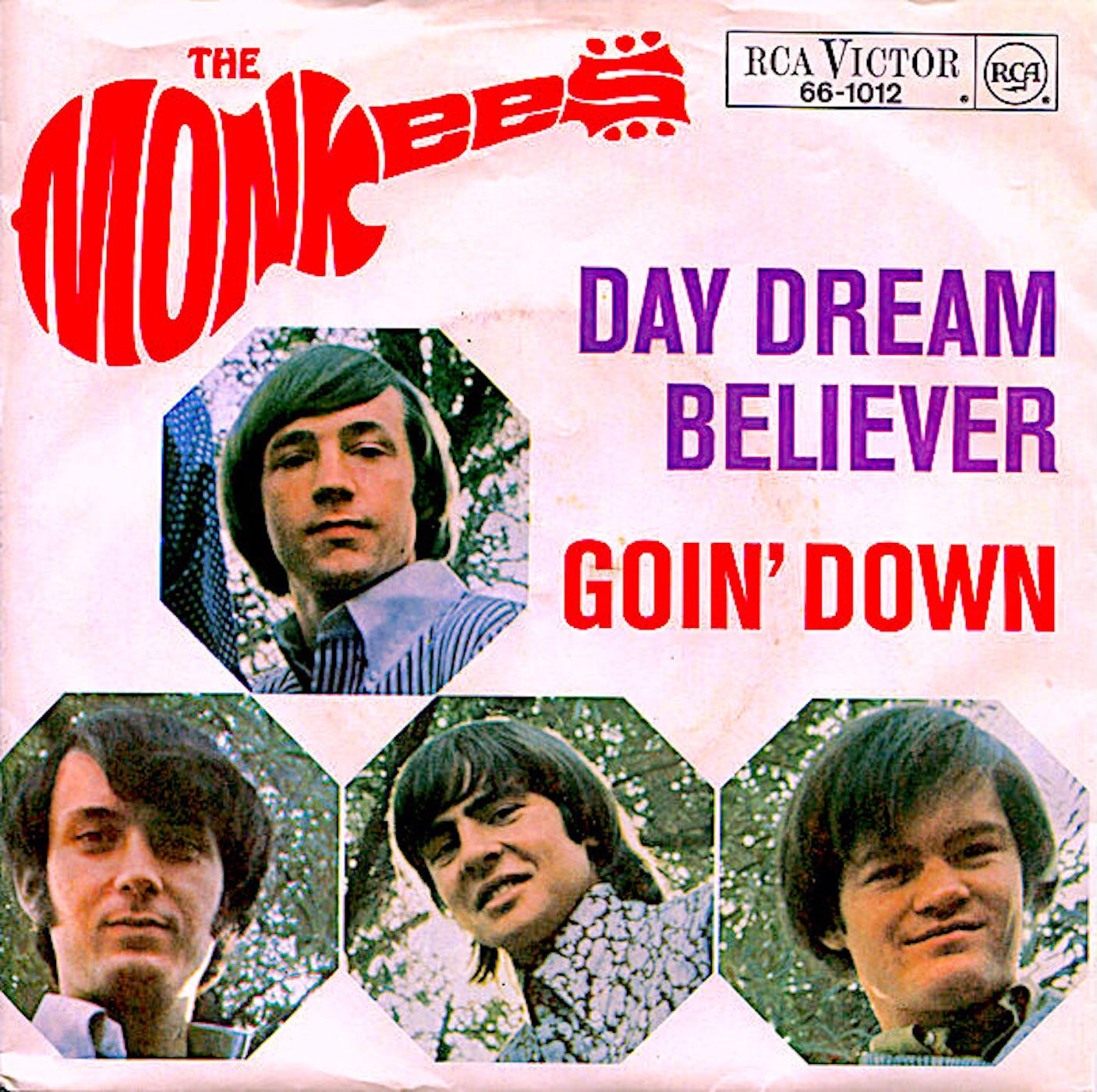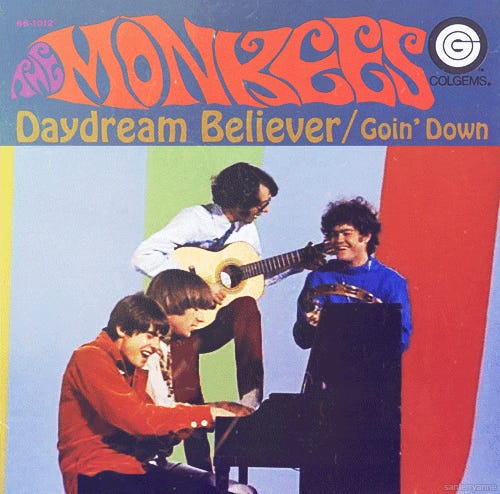A SONG NOBODY WANTED: “DAYDREAM BELIEVER”
Happy 54th Birthday to an eternally-cheerful Monkees single
On October 25th 1967, The Monkees 45 RPM single “Daydream Believer” surprised everyone by becoming their second-biggest hit after “I’m a Believer.” Almost overnight, “Daydream Believer” was on radios and turntables everywhere, peaking at #1 (for four weeks) on the Billboard charts…not bad for a song nobody wanted and was initially recorded as “album filler.” Their colorful segment for the TV show has been repeatedly mimicked and is a touchstone for the rock music video format.
The song was written by John Stewart around the time he left the hugely successful folk-pop act The Kingston Trio. He later recalled, "I remember going to bed thinking, 'What a wasted day — all I’ve done is daydream,' and from there I wrote the whole song. I never thought it was one of my best...Not at all.”
The song was “part three of a trilogy of songs about suburban life. Married couples start out in an idealistic haze, but after a few years it wears off, and each sees the other as they really are. This is when genuine love is proven.” Later, as I heard it from Stewart’s widow, Buffy Stewart, that the “homecoming queen” in the lyric was referring to her. Buffy recorded her version in 2010, with Davy Jones singing and Peter Tork on banjo (I was at the session), and I performed it live with her in 2012.
When Stewart finished the song in 1967, he pitched it to major acts of the day—such as Spanky & Our Gang and We Five, but they rejected it. It wound its way to The Monkees after Stewart attended a party and ran into producer Chip Douglas, then transitioning to The Monkees after a good run working with The Turtles (this photo shows Douglas in The Modern Folk Quartet with “Fast” Eddie Hoh on drums and guitarist Jerry Yester, sideman for The Monkees and Lovin’ Spoonful. On banjo is Henry Diltz before he became a rock photographer extraordinaire):
Douglas presented it to The Monkees and they added it to the summer-1967 sessions for the PISCES AQUARIUS CAPRICORN & JONES album, regarding the song as “album filler.” Davy Jones was imposed upon to sing it despite an already-frenzied workload. Like a good soldier he did it, even though you can hear the agitation in his vocal. Then, for unclear reasons, the track was shelved until someone at Colgems/RCA Victor (The Monkees record label) demanded a single. In 1968 the track landed on THE BIRDS, THE BEES, & THE MONKEES album.
All four Monkees worked on the “Daydream Believer” session: Davy Jones on lead vocals + percussion, Micky Dolenz on harmony vocals + percussion, Michael Nesmith on electric guitar (doing cool harmonics), and Peter Tork on piano—Peter created the opening piano signature that makes the song break out. They were backed by The Wrecking Crew with “Fast” Eddie Hoh, a legendary drummer who’d worked with Tim Buckley, Gene Clark, Donovan, Flying Burrito Brothers, Al Kooper, The Mamas & Papas, and The Modern Folk Quartet (Hoh also played on “Pleasant Valley Sunday” and the B-side “Goin’ Down”). The arrangement was orchestrated by renowned jazz trumpeter and composer Shorty Rogers. He intentionally quoted the seven-note phrase from “Help Me Rhonda” (Beach Boys) that precedes the chorus. The arrangement also owes a bit to “Penny Lane” (Beatles).
RCA Victor did not like the lyrics as Stewart wrote them. He first wrote "Now you know how funky I can be,” (funky, as in “smelly" or “of low esteem”), but the minions at RCA insisted he change it to "Now you know how happy I can be." Stewart balked, but had faith it would be a hit, and he capitulated. It was believed that an RCA boss (or Douglas) penciled in the change, but Davy claimed he was the one with the pencil, telling me and many others, “There was no way I was going to sing ‘funky.’ In the 60s, that was nearly a swear word. I was supposed to be a ‘fresh face’ for the kids.” He also couldn’t read the handwritten lyric sheet in the studio, misreading the line “shaving razor’s old” as “shaving razor’s cold”.
The “Daydream Believer” single was backed with the Mose Allison-influenced “Goin’ Down,” Micky Dolenz’s funk tour de force (funk, meaning “jazzy-soulful gritty music like James Brown”).
The single became a smash hit in time for Christmas. Like thousands of other kids with a “Christmas connection” to it, I received the pic sleeve 45 as a gift from my Aunt Lil.
Stewart never complained about the royalties that poured in, saying “it (didn't just) pay the rent. It kept me alive all these years.” He later wrote a sequel-of-sorts, “She Believes,” which Davy recorded in 1986 for his (under-rated) solo album INCREDIBLE (recently re-released on 7A Records).
"Daydream Believer" has since to gone on to become a standard for “sunshine pop” and a Monkees remix re-charted in 1986. It has been used in films, TV shows, and covered scores of times in eclectic styles, charting for Anne Murray and Susan Boyle—not to mention a punk version by Japanese band Shonen Knife.
In 1998 it was given a techno-jazz-pop treatment by Atomic Kitten, the British “girl group” founded by Orchestral Manoeuvers in the Dark (OMD) members Stuart Kershaw and Andy McCluskey. Late in 1997, management for this group approached Davy and I about collaborating on this but we could never work out a schedule with Davy. The group had a deadline and went ahead with it. I was impressed with the outcome:
I calculated that, in his life, Davy must’ve sung it live upwards to 10,000 times. In shows, he stuck to the common arrangement, though I heard him do it country style
...and we performed it several times with symphony orchestras at pops concerts.
In 2000, he and I released a techno-dance version of it, which got some dance-club play in Russia and Scandinavia. Of the many stories he could tell about it, one he liked was when he and Mick Fleetwood did it together “in the middle of winter at some gig near the Arctic Circle. There he was bangin’ away with his mouth hangin’ open. Heavy man.”
One day in the 90s, I was hanging out at Spruce Lawn with Davy, talking about famous “signature songs” like “Roundabout” (Yes) and “Stairway to Heaven” (Led Zeppelin). I asked him, “What does ‘Daydream Believer’ mean anyway?” Davy replied, “I dunno. What do you think it means?” I mulled it over and said, “It’s about a cheerleader daydreaming in class.” He cracked, “Good enough. Pays the light bill.”
It was in my solo set before Davy passed in 2012, and I now perform it almost every time I go out, keeping up the cheerful sing-a-long.
Between the music and the words, “Daydream Believer” encourages people to feel more easeful about life and to nurture your dreams, big or small.
(This article © 2025 by Johnny J. Blair. Please ask for permission to republish outside of Substack and, if you quote any portion, please quote me as a source. Thank you.)
#daydreambeliever #monkees #davyjones #johnnyjblair #sunshinepop #fasteddiehoh #eddiehoh #johnstewart #buffystewart #petertork







